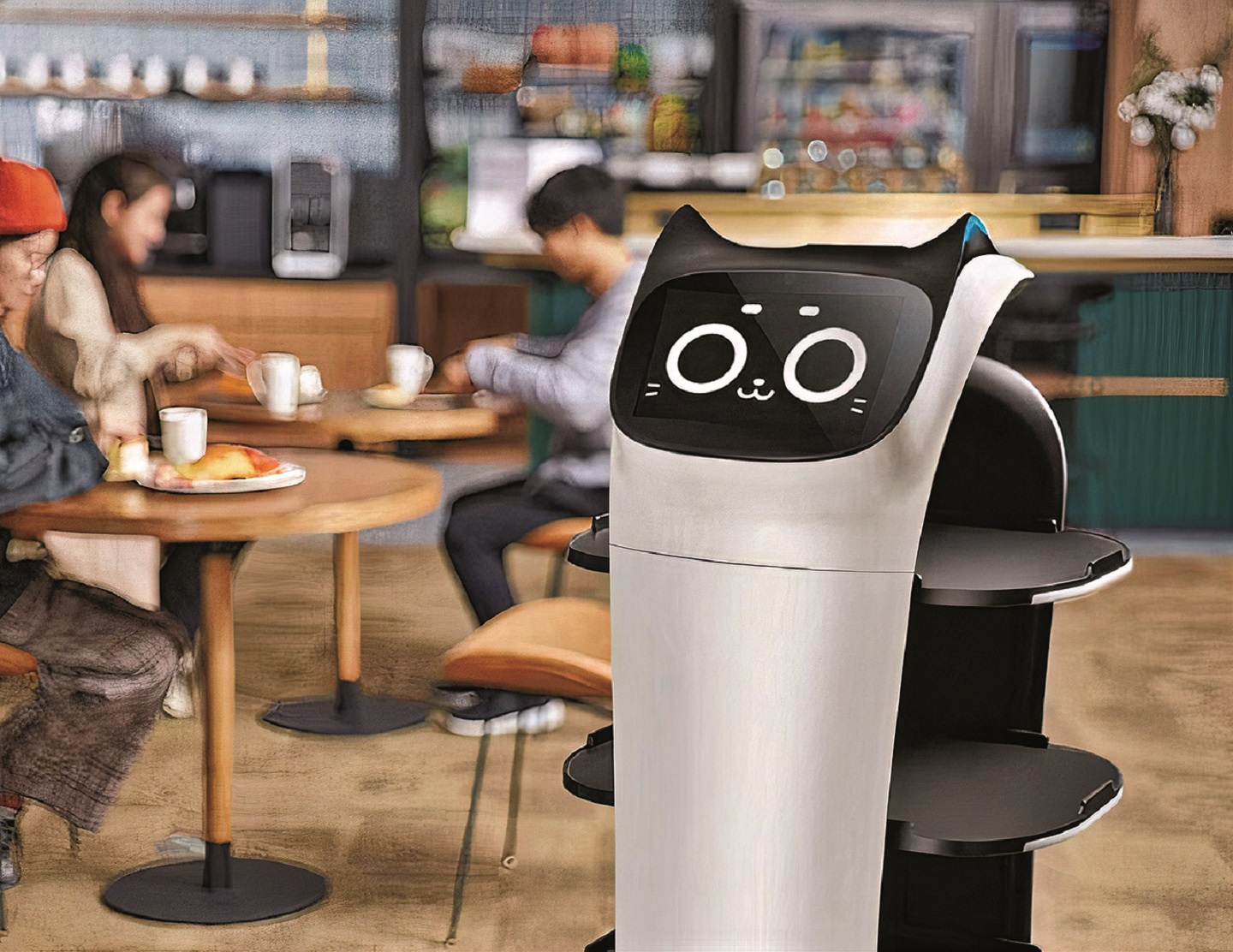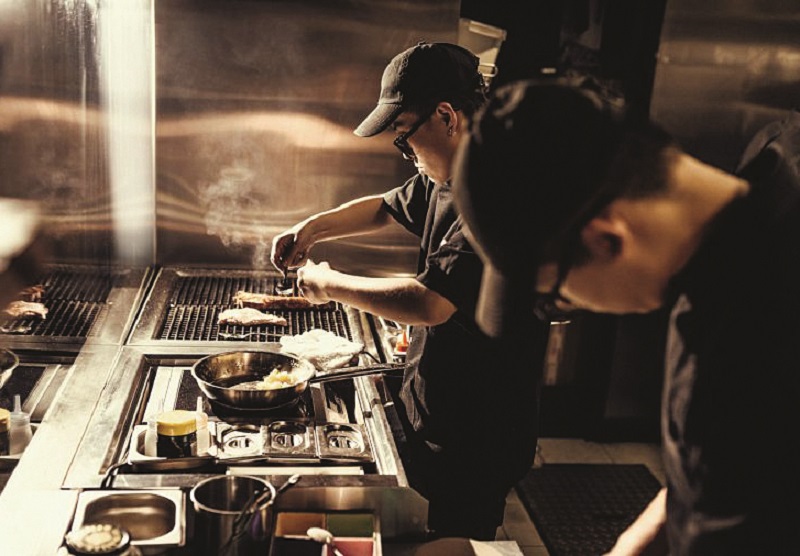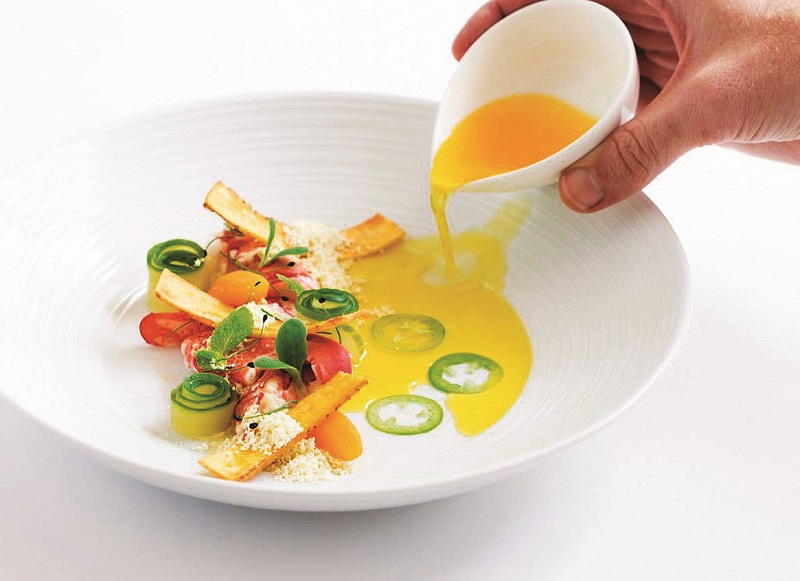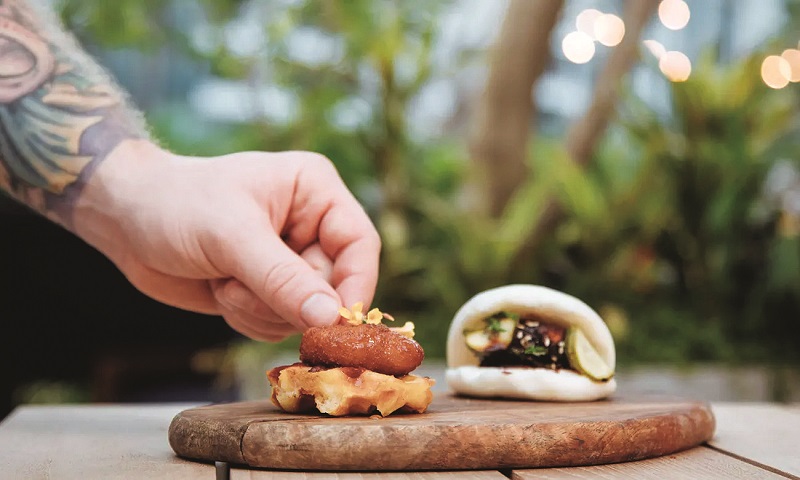
The cat-like BellaBot reacts emotionally with different facial expressions (Photo: BellaBot)
If you canvass opinions from fellow food enthusiasts about why people go to restaurants these days, the answer will differ markedly from a decade ago. In recent years, voguish talk around provenance and sustainability spins a yarn to draw customers into a gustatory journey. People lining up to gain entry into an under-the-radar, two Michelin-starred eatery are not waiting to be transported but to be affirmed and validated on social media. However, no matter how much time has passed, a morsel of truth persists — consuming food alongside other people evokes thoughts about the taste, space and customs we share; and restaurants are perpetual motion machines that help turn the larger gears in a city’s dining scene.
Now that international travel has resumed, and the cork has burst from the bottle, dining establishments battered by the pandemic are buzzing once again in a recovering economy. No industry has experienced such a violent swing between feast and famine as F&B, but a new generation of digital-native cooks is rewriting the rules as they scour the landscape for what’s next while making sure meaningful connections at the table are not lost. Take a look at how new innovations and future trends are helping restaurants create experiences patrons want and are willing to come back for.
Ghost kitchens take new form
Scarcely a newfangled concept, ghost kitchens (also called cloud kitchens) are off-site meal-preparation facilities untethered from physical restaurants with no dine-in option to lower overheads. But these stripped-down cooking spaces are no longer limited to just one restaurant. Imagine scrolling through a virtual buffet of supper options on a delivery app and ordering a wagyu burger. What happens next is that your food will be assembled by a ghost kitchen owned by a virtual restaurant operator, which also prepares food for 20 other delivery-only burger brands it owns or licences — all by the same crew.
Even without a storefront or signing an expensive long-term lease for a bricks-and-mortar location, these services are helping restaurants expand their footprint and brand recognition beyond the immediate neighbourhood. In Miami, the US, the combination of mobility and scale is being further advanced by REEF Technology, a parking lot management company that transformed unloved parking lot spaces into profitable neighbourhood hubs to peddle curated goods and services. Today, it has some 4,500 parking sites across the country where mobile pods — roughly the size of shipping containers — prepare delivery orders from several restaurants, whether they are serving lobster rolls or a humble bánh mì.
Recipe for success
Adding mayonnaise to a Bloody Mary sounds like a wayward craving gone awry, yet IBM’s artificial-intelligence (AI) cooking app claims the combination works. Known for creating machines that demolish players in chess and the game show Jeopardy!, the New York-based computer conglomerate tried its hand in the kitchen by taking users’ requested ingredients to design recipes based on memory and flavours that work together. As intuitive as it may be, it lacks common sense, though — no reasonable human chef would go through the trouble of grilling 500g of shelled green peas even if it means elevating a regular chicken taco.
But that technology was a few years ago. Deep machine learning has improved over the years by ingesting huge amounts of unstructured data — be it books, academic studies or even tweets — to analyse food patterns that will appeal to customers and optimise a restaurant’s business. An AI-powered kitchen extends beyond the idea of exploratory meals with variables waiting to be filled in — it cleverly and quickly analyses multiple data inputs from menus, reviews and social media fads to gain an understanding of underlying trends, in addition to providing insights into reducing food waste and trimming operational expenditure. So, the next time an app urges you to add matcha to ramen, you could risk offending a purist but also bowl the world over.
Bionic iconic
What may seem like second nature to human servers — manners and customer service — can be all but impossible to teach a machine. But a recent visit to Artisan’s Playground by Cookhouse at Rivercity, Kuala Lumpur saw a fleet of BellaBots, delivery assistants aptly named after culinary luminaries such as Gordon, Heston and Jamie, shuttling food to hungry diners with a broad smile and confetti (if it is your birthday). These robo-helpers only constitute a small part of a dining shift, in which tech tools are automating away some customer-facing jobs (like ordering or cleaning) to help restaurants overcome the current labour crunch and wage inflation.
Whatever their effect on employment, smarter and nimbler robots are on the way: scientists at Roboexotica Festival in Vienna, Austria built a mechanised bartender solely dedicated to preparing mojitos; Shenzhen-originated KettyBot automatically greets passers-by once it detects a potential customer; barista ELLA will be serving commuters gourmet coffee at 30 Mass Rapid Transit stations in Singapore by end 2022, as part of a collaboration with F&B start-up Crown Digital.
While robots are harbingers of the future, automation is also giving rise to more digital food consultants, which identify strategic spaces with good foot traffic, build relevant product concepts based on local consumption drives, and predict the trajectory of a restaurant’s growth. For instance, Singapore-based start-up Easy Eat AI, which also has operations in Malaysia, is helping restaurants digitalise all parts of their business, from inventory and customer orders to delivery, via AI-based analytics to improve revenue.
Nosh on edible tech
Your next fast-food meal may come with a nugget of info — that no chicken died to make it. Before you dismiss this as dystopian satire, the lab-grown meat spearheaded by Silicon Valley food tech unicorn Eat Just took flight in Singapore, the world’s only nation to have approved the commercialisation of science-cultivated chicken. As extreme climate conditions cause prices to surge and accelerate the food security crisis, innovations such as lab-grown meat and 3D-printed food are pushed to the forefront of efforts to rethink how, and what, we can feed the world population’s next billion.
Scientists and food engineers in several countries — with financial support from investment companies and environmentally minded personalities such as US billionaire Bill Gates and actor Leonardo DiCaprio — are already devising commercially viable ways to transform animal stem cells into marbled wagyu steak, briny oysters or sushi-grade salmon. Are restaurateurs on board? Three Michelin-starred French chef Dominique Crenn (the first female chef in the US to receive this honour) has inked a deal with cell-based meat company Upside Foods to include engineered chicken in her menu. In the fast lane, McDonald’s Corp has rolled out the McPlant, a plant-based patty co-developed with Beyond Meat. Whether you see “cultured” meat as a panacea for hearth and health, or a disingenuous gimmick that leaves a bad taste in your mouth, the tank-to-table movement is here to stay.
This article first appeared on Aug 1, 2022 in The Edge Malaysia.






